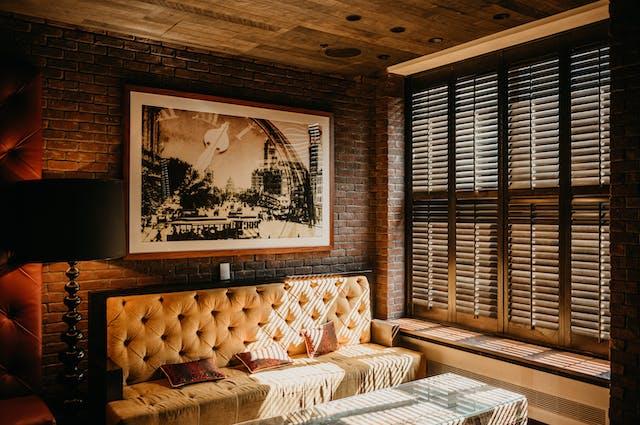
Setting the Mood:
Lighting has the power to influence our emotions and create a specific mood within a space. Different lighting techniques can evoke a wide range of emotions and set the desired ambiance. For example, warm and soft lighting can create a cozy and intimate atmosphere, perfect for relaxation or socializing. On the other hand, bright and cool lighting can energize and stimulate productivity, making it ideal for workspaces or areas where focus is required. By choosing the right lighting fixtures and bulbs, you can set the mood that aligns with the purpose of the room.
Enhancing Architectural Features:
Lighting can be used to highlight and enhance the architectural features of a room. Whether it's a beautiful fireplace, an intricate ceiling design, or a unique piece of artwork, strategic lighting can draw attention to these focal points and create a visually stunning display. Spotlights, track lighting, or accent lighting can be used to direct attention to specific areas, adding depth and dimension to the room's overall decor.
Creating Visual Interest:
Lighting fixtures themselves can be a statement piece in home decor. Unique and stylish light fixtures can serve as focal points and add visual interest to a room. Whether it's a modern chandelier, a vintage pendant light, or a sleek floor lamp, the right lighting fixture can elevate the aesthetic appeal of a space and become a conversation starter. Consider the style and theme of your room when selecting lighting fixtures to ensure cohesiveness and create a visually pleasing atmosphere.Layering Light:
To create a well-balanced and visually appealing space, it's essential to incorporate different layers of light. Layering light involves using a combination of ambient, task, and accent lighting to achieve the desired effect. Ambient lighting provides overall illumination and sets the general tone of the room. Task lighting focuses on specific areas where activities such as reading, cooking, or working take place. Accent lighting is used to highlight specific objects, artwork, or architectural features. By incorporating all three layers of light, you can create depth, warmth, and functionality within a space.Natural Light:
Natural light is an essential element in home decor and has numerous benefits. It not only enhances the aesthetic appeal of a space but also contributes to our overall well-being. Natural light can make a room feel more spacious, reduce eye strain, and improve our mood. When designing a space, consider the placement of windows and the orientation of the room to maximize natural light. Use light curtains or blinds to control the amount of sunlight entering the room and prevent glare. Incorporating natural light into your home decor can create a bright and inviting atmosphere.Dimmers and Smart Lighting:
Installing dimmers and utilizing smart lighting systems can offer flexibility and control over the ambiance of a space. Dimmers allow you to adjust the intensity of light, creating a softer or more dramatic effect as desired. Smart lighting systems, such as those controlled by smartphone apps or voice assistants, offer convenience and customization. You can program different lighting scenes for different activities or moods, allowing you to effortlessly adjust the lighting in a room to suit your needs.Color Temperature:
The color temperature of light bulbs can significantly impact the ambiance of a space. Color temperature refers to the warmth or coolness of the light emitted by a bulb, measured in Kelvin (K). Warm light, with a color temperature of around 2700-3000K, creates a cozy and intimate atmosphere. Cool light, with a color temperature of around 5000K or higher, provides a more energetic and vibrant ambiance. Consider the color temperature of light bulbs when selecting lighting fixtures to achieve the desired mood and ambiance in a room.Lighting for Different Rooms:
Different rooms have different lighting requirements to fulfill their specific functions. Here are some considerations for lighting in different areas of your home:- Living Room: In the living room, a combination of ambient and accent lighting can create a warm and inviting atmosphere. Use floor or table lamps to provide ambient lighting, while wall sconces or track lighting can be used for accent lighting to highlight artwork or architectural features.
- Kitchen: In the kitchen, bright and task-oriented lighting is essential for food preparation and cooking. Under-cabinet lighting can provide focused illumination on countertops, while recessed or pendant lights can offer overall ambient lighting.
- Bedroom: Bedrooms require lighting that promotes relaxation and tranquility. Soft, warm lighting is ideal for creating a cozy and calming atmosphere. Bedside table lamps, wall sconces, or dimmable overhead lighting can be used to achieve the desired effect.
Lighting is a powerful tool in home decor that can significantly impact the mood, ambiance, and overall aesthetic appeal of a space. By understanding the different lighting techniques, layering light, incorporating natural light, utilizing dimmers and smart lighting, considering color temperature, and tailoring lighting to different rooms, you can create a visually stunning and inviting atmosphere in your home. Whether it's a cozy living room, a functional kitchen, or a relaxing bedroom, lighting can transform any space into a place that reflects your personal style and enhances your well-being. So, take advantage of the power of lighting and let it illuminate your home decor.
Article
Be the first comment
2,343 Views
0
0














